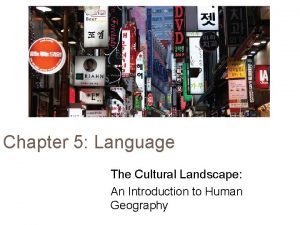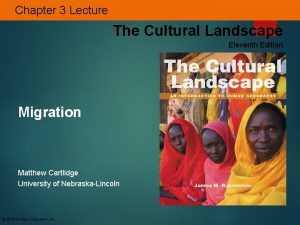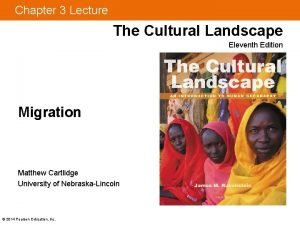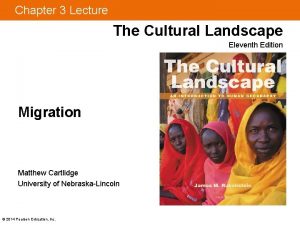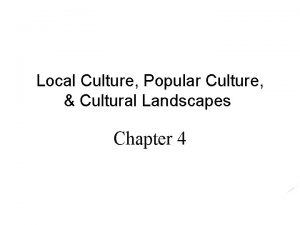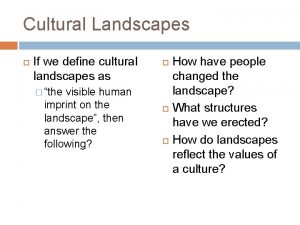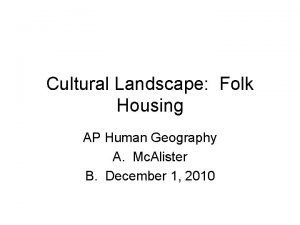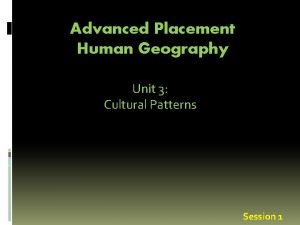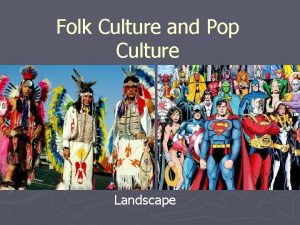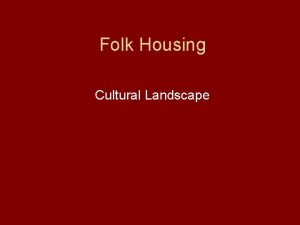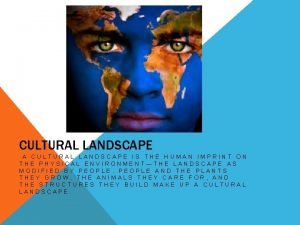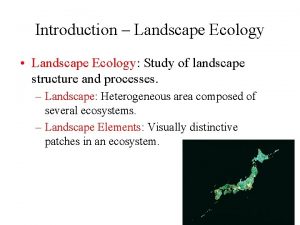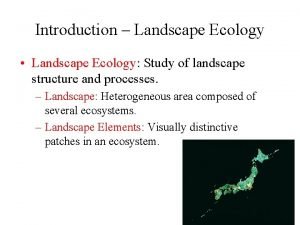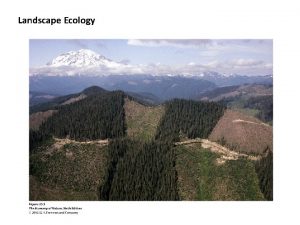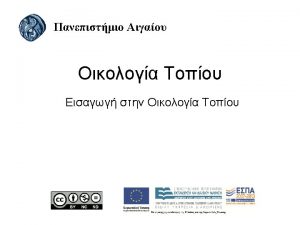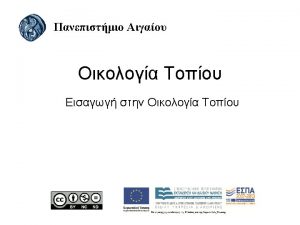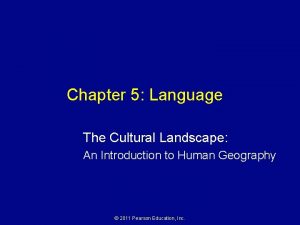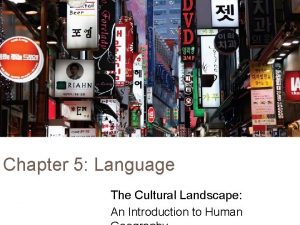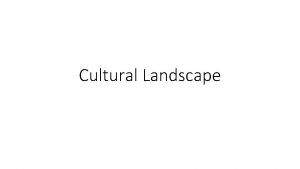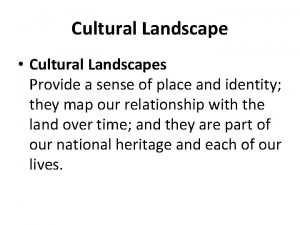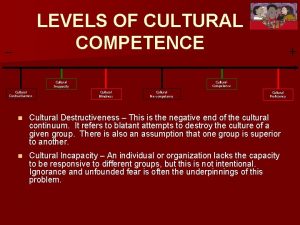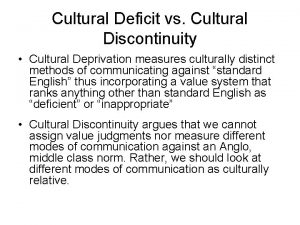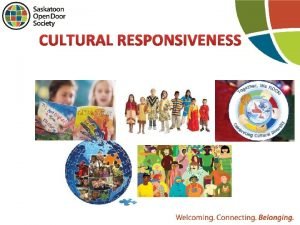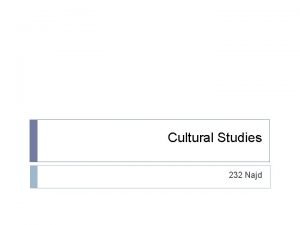Chapter 5 Language The Cultural Landscape An Introduction





























- Slides: 29

Chapter 5: Language The Cultural Landscape: An Introduction to Human Geography © 2011 Pearson Education, Inc.

Where Are English Language Speakers Distributed? • Origin and diffusion of English – English is spoken by 328 million as a first language – English colonies – Origins of English • German invasions • Norman invasions © 2011 Pearson Education, Inc.

English-Speaking Countries Figure 5 -2 © 2011 Pearson Education, Inc.

Invasions of England Figure 5 -3 © 2011 Pearson Education, Inc.

Where Are English Language Speakers Distributed? • Dialects of English – Dialect = a regional variation of a language – Isogloss = a word-usage boundary – Standard language = a well-established dialect – Dialects • In England • Differences between British and American English © 2011 Pearson Education, Inc.

English Dialects Figure 5 -5 © 2011 Pearson Education, Inc.

Where Are English Language Speakers Distributed? • Dialects of English – Dialects in the United States • Settlement in the eastern United States – Current differences in the eastern United States » Pronunciation differences © 2011 Pearson Education, Inc.

Dialects in the Eastern United States Figure 5 -7 © 2011 Pearson Education, Inc.

Soft Drink Differences Figure 5 -8 © 2011 Pearson Education, Inc.

Why Is English Related to Other Languages? • Indo-European branches – Language branch = collected of related languages – Indo-European = eight branches • Four branches have a large number of speakers: – – Germanic Indo-Iranian Balto-Slavic Romance © 2011 Pearson Education, Inc.

Branches of the Indo-European Family Figure 5 -9 © 2011 Pearson Education, Inc.

Linguistic Differences in Europe and India Figure 5 -10 Figure 5 -11 © 2011 Pearson Education, Inc.

Romance Branch Figure 5 -12 © 2011 Pearson Education, Inc.

Why Is English Related to Other Languages? • Origin and diffusion of Indo-European – A “Proto-Indo-European” language? • Internal evidence • Nomadic warrior theory • Sedentary farmer theory © 2011 Pearson Education, Inc.

Nomadic Warrior Theory Figure 5 -14 © 2011 Pearson Education, Inc.

Sedentary Farmer Theory Figure 5 -15 © 2011 Pearson Education, Inc.

Where Are Other Language Families Distributed? • Classification of languages – Indo-European = the largest language family • 46 percent of the world’s population speaks an Indo-European language – Sino-Tibetan = the second-largest language family • 21 percent of the world’s population speaks a Sino-Tibetan language – Mandarin = the most used language in the world © 2011 Pearson Education, Inc.

Language Families Figure 5 -16 © 2011 Pearson Education, Inc.

Where Are Other Language Families Distributed? • Languages of the Middle East and Central Asia – Afro-Asiatic • Arabic = most widely spoken – Altaic • Turkish = most widely spoken – Uralic • Estonian, Hungarian, and Finnish © 2011 Pearson Education, Inc.

Language Family Tree Figure 5 -17 © 2011 Pearson Education, Inc.

Where Are Other Language Families Distributed? • African language families – Extensive linguistic diversity • 1, 000 distinct languages + thousands of dialects – Niger-Congo • 95 percent of sub-Saharan Africans speak a Niger-Congo language – Nilo-Saharan – Khoisan • “Click” languages © 2011 Pearson Education, Inc.

African Language Families Figure 5 -19 © 2011 Pearson Education, Inc.

Nigeria’s Main Languages Figure 5 -20 © 2011 Pearson Education, Inc.

Why Do People Preserve Languages? • Preserving language diversity – Extinct languages • 473 “endangered” languages today – Examples • Reviving extinct languages: Hebrew • Preserving endangered languages: Celtic – Multilingual states • Walloons and Flemings in Belgium – Isolated languages • Basque • Icelandic © 2011 Pearson Education, Inc.

Languages in Belgium Figure 5 -23 © 2011 Pearson Education, Inc.

Why Do People Preserve Languages? • Global dominance of English – English: An example of a lingua franca • Lingua franca = an international language • Pidgin language = a simplified version of a language • Expansion diffusion of English • Ebonics © 2011 Pearson Education, Inc.

Why Do People Preserve Languages? • Global dominance of English – Diffusion to other languages • Franglais – The French Academy (1635) = the supreme arbiter of the French language • Spanglish • Denglish © 2011 Pearson Education, Inc.

English–French Language Boundary Figure 5 -27 © 2011 Pearson Education, Inc.

The End. Up next: Religion © 2011 Pearson Education, Inc.
 Language
Language The cultural landscape chapter 3
The cultural landscape chapter 3 The cultural landscape chapter 3
The cultural landscape chapter 3 The cultural landscape chapter 3
The cultural landscape chapter 3 Cultural landscape convergence
Cultural landscape convergence What is the meaning of cultural landscape
What is the meaning of cultural landscape Cape cod ap human geography
Cape cod ap human geography Ap human geography unit 3 review
Ap human geography unit 3 review Folk customs usually originate from
Folk customs usually originate from Hình ảnh bộ gõ cơ thể búng tay
Hình ảnh bộ gõ cơ thể búng tay Frameset trong html5
Frameset trong html5 Bổ thể
Bổ thể Tỉ lệ cơ thể trẻ em
Tỉ lệ cơ thể trẻ em Chó sói
Chó sói Tư thế worm breton là gì
Tư thế worm breton là gì Chúa yêu trần thế
Chúa yêu trần thế Kể tên các môn thể thao
Kể tên các môn thể thao Thế nào là hệ số cao nhất
Thế nào là hệ số cao nhất Các châu lục và đại dương trên thế giới
Các châu lục và đại dương trên thế giới Công thức tiính động năng
Công thức tiính động năng Trời xanh đây là của chúng ta thể thơ
Trời xanh đây là của chúng ta thể thơ Cách giải mật thư tọa độ
Cách giải mật thư tọa độ Phép trừ bù
Phép trừ bù Phản ứng thế ankan
Phản ứng thế ankan Các châu lục và đại dương trên thế giới
Các châu lục và đại dương trên thế giới Thơ thất ngôn tứ tuyệt đường luật
Thơ thất ngôn tứ tuyệt đường luật Quá trình desamine hóa có thể tạo ra
Quá trình desamine hóa có thể tạo ra Một số thể thơ truyền thống
Một số thể thơ truyền thống Bàn tay mà dây bẩn
Bàn tay mà dây bẩn Vẽ hình chiếu vuông góc của vật thể sau
Vẽ hình chiếu vuông góc của vật thể sau
